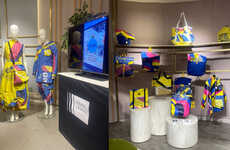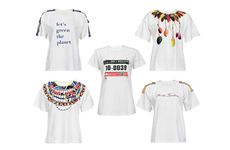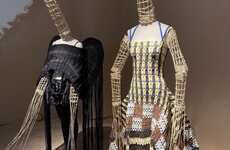
‘Cross-Pollination: Eco-Fashion: Going Green' Is Ingenious
References: www3.fitnyc.edu & fitnyc.edu
The ‘Cross-Pollination: Eco-Fashion: Going Green’ report is the collaborative result of an initiative by Museum at FIT to have American and Mexican design students demonstrate “what eco-fashion means to them.”
The project involved tasking students from two separate schools in both countries with the creation of entirely eco-friendly clothing and resulted in three completely unique and utterly imaginative outfits as well as a 22-page report. Through the use of social media, each school group was able to share and explore their varying interpretations and definitions of sustainable fashion. The best part about the ‘Cross-Pollination: Eco-Fashion: Going Green’ project, however, is that the report also doubles as a pattern that readers can use to make their own eco-friendly garment at their leisure.
The project involved tasking students from two separate schools in both countries with the creation of entirely eco-friendly clothing and resulted in three completely unique and utterly imaginative outfits as well as a 22-page report. Through the use of social media, each school group was able to share and explore their varying interpretations and definitions of sustainable fashion. The best part about the ‘Cross-Pollination: Eco-Fashion: Going Green’ project, however, is that the report also doubles as a pattern that readers can use to make their own eco-friendly garment at their leisure.
Trend Themes
1. Eco-fashion - The trend towards environmentally sustainable clothing presents opportunities for innovation in materials, manufacturing and supply chain operations.
2. Collaborative Design - Collaborative programs and initiatives such as this project will allow fashion designers to explore new creative avenues and leverage diverse perspectives to drive innovation in the industry.
3. Social Media for Sustainable Fashion - Social media can be a powerful tool for encouraging consumer interest in eco-friendly fashion and promoting sustainable fashion initiatives.
Industry Implications
1. Fashion Design - The fashion industry can leverage innovative materials and production processes to create eco-friendly and sustainable clothing products.
2. Education - Educational institutions can develop cross-border programs that encourage creative collaboration and innovation in environmentally sustainable fashion design.
3. Social Media - Innovative social media platforms can facilitate greater consumer engagement with eco-friendly and sustainable fashion products.
3.4
Score
Popularity
Activity
Freshness























